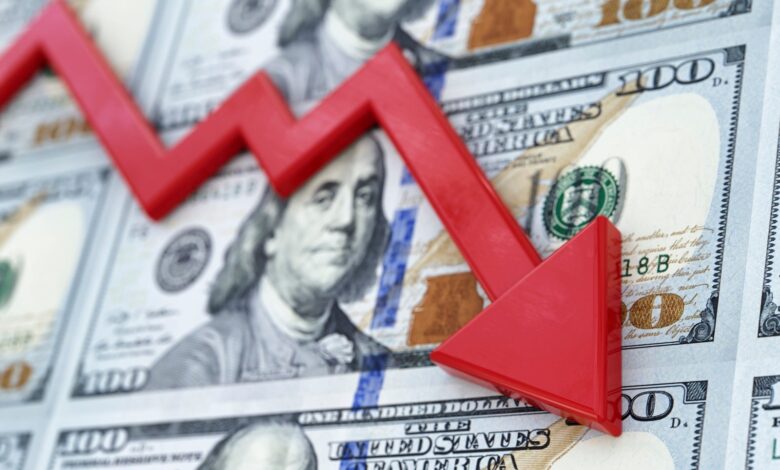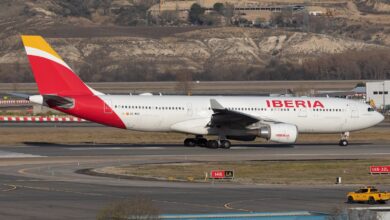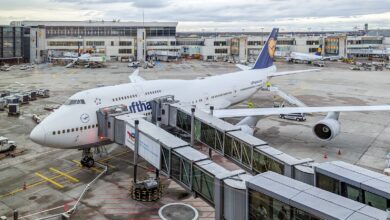Higher fees, less service: Why the value of cruising isn’t what it used to be

Anyone who has vacationed on the high seas knows that cruises provide excellent value, with fares covering food, accommodations, entertainment and transportation between ports — often at a lower price point than what you’d find if you were to plan a similar land-based trip.
That’s still true, but as cruise lines struggle to increase profits and pay off pandemic-related debts in the face of rising operating costs, they’ve had to come up with ways to cut expenses or increase prices. Some are subtle; others are more blatant. Regardless, these cost-cutting and money-making moves affect what you’ll receive for the price you pay to sail.
Where will you see devaluations on your next cruise? These are some of the ways cruise lines could have you paying more while receiving less.
For more cruise guides, news, reviews and tips, sign up for TPG’s cruise newsletter.
Sky-high gratuities
One way cruise lines have routinely raised the overall price of voyages for years is by increasing onboard gratuities. Because tips are automatically charged to each passenger’s onboard account on a daily basis, they’ve become more of a service charge or resort fee than a little extra something paid to crew members as a reward for a job well done. (Yes, you can remove prepaid gratuities, but I don’t recommend it. Just be sure to budget for them as part of the cost of your trip.)
Cruise lines keep mum on where your auto-gratuity dollars actually go. If the money goes to crew members, as it should, it allows cruise lines to pay the crew less because the tips supplement their income. If it doesn’t, it’s more revenue for the cruise line. Either way, higher gratuities cost you more and benefit the cruise lines financially.
Norwegian Cruise Line now charges the highest auto-gratuity amount in the industry — $20 per person, per day (including children), or $25 per person, per day, for passengers staying in suites. That’s up from $16 per person, per day, after the previous increase and up from $12 per person, per day, in 2008. If you’re a family of four not staying in a suite, that’s an extra $80 per day or $560 for a weeklong sailing. Ouch.
Gratuity increases tend to ebb and flow. When one line implements them, it makes it easier for other lines to follow suit. In that vein, Royal Caribbean and Celebrity Cruises also raised the daily amounts passengers are charged to $18 per person. For Celebrity, it was the second time within a year that the line saw tip amounts increase.
Related: 10 times you don’t need to tip on a cruise

Daily Newsletter
Reward your inbox with the TPG Daily newsletter
Join over 700,000 readers for breaking news, in-depth guides and exclusive deals from TPG’s experts
Food adjustments
Another approach cruise lines have taken to save costs is being more mindful when provisioning. Lines have food ordering down to a science, but some have realized more can be done to cut down on waste and, therefore, cost. (And who doesn’t love an environmental initiative that also helps the bottom line?)
Royal Caribbean, for example, orders ingredients that can be used multiple ways and makes sure food preparation leftovers aren’t wasted if they can be added to another dish (like using vegetable pieces to make soup). However, as a result, it has also pared down its menus to feature several dishes that use the same or similar ingredients, which can mean less variety for passengers.
Meanwhile, Carnival Cruise Line has decreased its portion sizes ever so slightly. “It should be invisible to you,” said Richard Pruitt, Carnival’s vice president of environmental operations, in a 2021 interview. “It shouldn’t feel like ‘oh, they’re being stingy with my food.’ But they’ve made adjustments; they’ve made improvements in [galley food] prep.”
Sure, you could always order an extra dish in the main dining room, but at extra-fee venues, you’ll be getting less food for the same (or a higher) price.
Related: Can you cruise sustainably? This cruise line thinks so
Increased alternative restaurant fees
We’ve already established that cruises offer excellent value, and their alternative eateries — the ones you pay extra for — are no exception. From steakhouses to sushi bars, there’s a specialty restaurant for just about every palate, and the prices are often less expensive than what you’d pay at home for a comparable meal.
With food costs ballooning, cruise lines have recently begun to raise their cover charges and a la carte pricing for added-fee restaurants. The price increases are not surprising — land-based restaurant prices have also skyrocketed — but they’re still hard on passengers’ wallets.
Royal Caribbean recently increased prices for items like barbecue and pub grub. At the line’s Playmakers sports bar, appetizers increased in price anywhere from $2 to $5 each, entrees rose from $9 to $11.99 apiece, and chicken wings went up from $4 to $6, depending on the number ordered, as reported by Royal Caribbean Blog.
Carnival also raised the cover charges at its Asian and Italian restaurants (each increasing from $18 to $24 per person), as well as at its teppanyaki grill (from $38 to $42 per person) and steakhouse (from $48 to $49 per person).
Related: 6 cruise lines with the best food at sea
Once-a-day cabin cleaning
One of the aspects of cruising that sets it apart from a hotel stay is twice-a-day room cleaning, which has been standard for decades. However, over the past couple of years, the three most popular cruise lines — Carnival, NCL and Royal Caribbean — have cut back to once a day for all standard cabins.
As far back as 2016, Carnival began asking passengers to select whether they’d prefer morning or evening room cleaning, with room stewards encouraging cruisers to select one or the other. That set the stage for other lines to roll back their offerings, too, and for Carnival to solidify once-a-day service.
Again, this is a case of cost-cutting that doubles as a green initiative. By cleaning half as many times, cruise lines conserve water but also save money on cleaning supplies and labor costs.
In fact, when Norwegian implemented its policy in early 2023, it eliminated the junior stateroom steward and stateroom steward positions it previously had and replaced them with a single role: stateroom attendant. Anyone who was previously employed at the stateroom steward level was demoted and received less pay on their next contract, while junior stewards received a bump under the new title.
The idea is that, because room cleaning is now limited to once a day, the work can be staggered, so fewer stewards are needed. Although fewer stewards doesn’t mean your room won’t be cleaned thoroughly, it does mean your room won’t be cleaned thoroughly as often as it might have been before the change.
Related: When it comes to housekeeping, cruise ships blow hotels out of the water
Less personalized butler service
One of the many perks of booking a suite on a cruise is a higher level of service that often includes a butler.
Celebrity Cruises recently made a change to the butler service it offers. Instead of assigning a single butler to its suites, the line now utilizes a team approach that sends any butler who’s available if you need something. That means you might not have the same butler twice, which prevents you from getting to know them and them from familiarizing themselves with your preferences.
Celebrity told The Points Guy in an e-mail that the change was made to improve the passenger experience. “If one butler had two guests requesting service at the same time, the butler could struggle to meet guest expectations,” a representative from Celebrity told TPG.
Still, to us it seems like a devaluation of the perk because you’ll be getting less personal service than you might have under the old system.
Related: Everything you can ask your cruise butler to do
Set-price port taxes and fees
As part of the taxes and fees tacked onto cruise fares, cruise ship passengers pay fees to each port of call they visit. But at times, weather, emergencies, mechanical issues, shoreside unrest and other unforeseen events can force cruise ships to alter their itineraries.
Per the terms of each line’s contract of carriage, the cruise line doesn’t owe cruisers anything for most missed ports or other itineray changes (other than a refund of money paid for shore excursions booked through the cruise line). Regardless, it has always been a standard practice for lines to issue refunds of port taxes and fees for skipped or canceled calls unless another port is substituted.
However, a TPG reader recently tipped me off to the fact that Norwegian Cruise Line no longer refunds taxes and fees in those cases. In an e-mail, a representative from the line told me it’s because “… we no longer allocate port fees. Government taxes and fees, which are reflected on guest invoices, are calculated as a set price for the reservation.”
Since the taxes for all ports on each itinerary are calculated as part of a lump sum, passengers could pay port taxes for places they don’t end up visiting. Per its contract, NCL is then able to keep the money for itself.
Related: 11 cruise fees that will drive you nuts
Packages where freebies are no longer free
A recent cruise industry trend to drive revenue is nearly all-inclusive packages that often save passengers money on extra-fee items they’d purchase anyway once on board. They might offer perks like Wi-Fi, alcohol, credits for alternative dining and shore excursions and crew gratuities.
These packages are sometimes rolled into the cost of a higher-tiered cruise fare — as is the case with Celebrity’s All Included and NCL’s Free at Sea — allowing passengers to pay one price for everything.
Other lines, such as Holland America and Princess Cruises, implemented similar programs but as add-ons. Passengers purchase a cruise, and then they can add on the packages for an additional fee, rather than the packages being part of the cruise fare.
In order to entice cruisers to purchase its most expensive package, Princess Premier, Princess had to find ways to make it more exclusive. The solution? Take something that used to be free for everyone, and make it free only for those who buy the package. The most disappointing casualty was free pizza at Alfredo’s and Gigi’s, which now comes with a fee for packageless passengers. Princess cruisers who don’t have the package now also have to pay an activation fee to use the line’s OceanNow food delivery service.
Another way some cruise lines are drawing more funds from passengers is by not including gratuities, even when cruisers purchase inclusive packages.
When Celebrity first rolled out its All Included perks, tips were on the list of extras that came with the line’s elevated fare tier. Now they’re no longer rolled in, meaning that the inclusions are less valuable even though prices for the higher-level fares haven’t decreased.
Related: A guide to cruise line all-inclusive packages
Room service fees
For a long time, cruise lines offered complimentary room service, often 24 hours (or nearly 24 hours) a day — a feature that set them apart from land-based hotels. At press time, Holland America and Disney Cruise Line were the only two of the major non-luxury cruise lines that still offer completely free room service around the clock.
All other lines now charge for at least some of their items. MSC Cruises even charges for continental breakfast items for passengers booked under its lowest fares, which would have been unheard of several years ago.
But not only are some of the biggest names in the industry charging for room service; some then increased those prices quite a bit after implementing them.
Take, for example, Celebrity, which more than doubled its room service fees in early 2023, making them some of the highest in the industry, along with Norwegian and Royal Caribbean — and that’s before the line tacks on an additional 18% gratuity.
Related: The ultimate guide to cruise ship food and dining
Higher cruise fares
For the first time since the COVID-19 pandemic hit, the cruise lines are back in the black as bookings soar to their highest levels since 2019. Because demand is up, cruise lines are able to charge higher prices. In fact, fares in 2023 were up 18% from what they were in 2019.
How does that translate into devaluation? Passengers are paying more money for cruises where fewer amenities, services and dining options are included and where onboard fees are higher than they’ve ever been. Essentially, cruisers are paying more for less.
Additionally, the industry is seeing less of a need to discount prices or offer extras in order to drive demand.
What that means for passengers is slightly less enticing deals than we’ve seen in the past several years for periods like Black Friday, Cyber Monday and wave season.
Be aware that, although cruise lines might offer second-passenger discounts or large percentages off of fares, they often come after prices have been marked up. Before you book any deal, make sure to price out what you’ll be paying per night, based on the length of your sailing, to be sure you feel it’s still a bargain after the discounts are applied.
Further, some cruise lines draw cruisers in with guarantees that they’ll be getting the lowest fares possible via price adjustments if fares drop after they book but before final payment. However, be aware of the fine print. For example, Celebrity’s Best Price Guarantee doesn’t apply to “Exciting Deals,” which are super low but require passengers to pay in full up front. So, if you book a voyage and then find a lower fare that’s an Exciting Deal, you won’t receive a price adjustment.
Related: 6 ways to get a deal on a cruise
Planning a cruise? Start with these stories:




